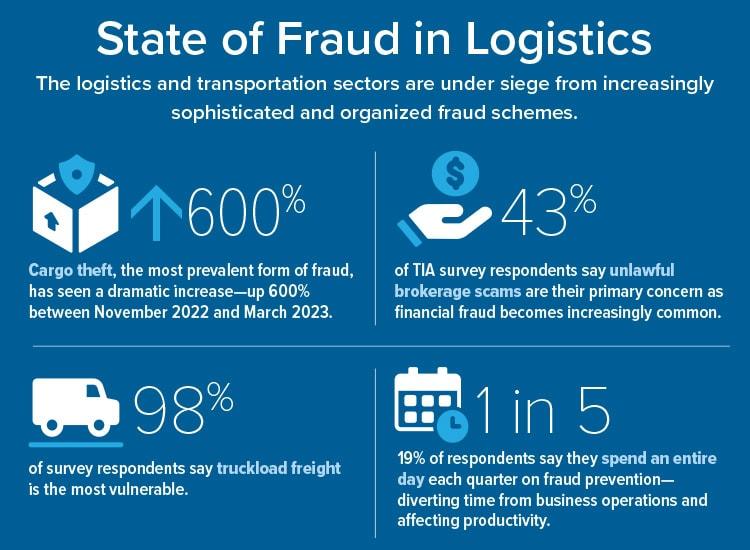Cargo theft is a growing challenge for businesses across the globe, posing serious risks to supply chains, profits, and customer trust. When theft occurs, handling the resulting claims quickly and efficiently becomes critical to minimizing losses and maintaining operational stability. In this practical guide, we’ll walk you through the essential steps and best practices for managing cargo theft claims—from initial reporting to final resolution. Whether you’re a logistics professional, insurer, or business owner, understanding how to navigate this complex process can make all the difference in protecting your assets and ensuring a smoother recovery.
Table of Contents
- Understanding the Key Challenges in Cargo Theft Claims
- Gathering and Organizing Crucial Evidence for Successful Claims
- Navigating Insurance Policies and Legal Requirements
- Implementing Preventative Measures to Mitigate Future Risks
- Insights and Conclusions
Understanding the Key Challenges in Cargo Theft Claims
Cargo theft claims are notoriously complex, primarily due to the multifaceted nature of supply chain logistics and the myriad of stakeholders involved. One of the main obstacles is proving liability, especially when theft occurs at transition points such as warehouses, terminals, or in transit. Determining who is responsible—whether it’s the carrier, warehouse operator, or another party—requires meticulous documentation and a clear chain of custody. Without comprehensive evidence, insurers and claimants often face disputes that delay settlement. Additionally, varying regulations across regions complicate compliance and affect the validity of claims, making expert legal guidance indispensable.
Another critical challenge lies in the accurate valuation of stolen goods. Cargo often comprises diverse products, each with different market values, depreciation rates, and contractual terms. Gathering invoices, delivery receipts, and market price references can be arduous, especially if the shipment includes perishable or custom-made items. Furthermore, fraudulent claims and misreporting pose a significant risk, requiring robust investigative procedures to verify the authenticity of every claim. A thorough understanding of these aspects, combined with strategic documentation and communication, can dramatically improve the chances of a successful cargo theft claim resolution.
Gathering and Organizing Crucial Evidence for Successful Claims
To build a strong case, the first step is to secure all relevant documentation and physical evidence immediately after discovering the theft. This includes photographs of the damaged or tampered cargo, police reports, delivery logs, shipping manifests, and communication records with carriers or warehouses. Each piece plays a vital role in reconstructing the event timeline and substantiating your claim. Remember, delays can cause evidence to degrade or become less credible, so swift action is critical.
Besides gathering materials, organizing them systematically enhances clarity and expedites the claims process. Implementing a digital inventory with categorized folders—such as “Proof of Ownership,” “Incident Reports,” and “Correspondence”—helps maintain easy access for all stakeholders. Consider using tools like spreadsheets or cloud storage with detailed notes for each item. This level of organization not only demonstrates professionalism but also significantly increases the likelihood of a favorable resolution.
Navigating Insurance Policies and Legal Requirements
Understanding the intricate details of your insurance policies is crucial when dealing with cargo theft claims. Many businesses overlook the specific clauses and conditions that dictate coverage, leading to delayed or denied claims. Start by thoroughly reviewing your insurance contract to identify the types of theft covered, the required reporting timelines, and any deductibles or claim limits. Keep a checklist to ensure you gather and submit all necessary documentation, such as police reports, proof of shipment, and inventory records. Maintaining transparent communication with your insurance provider throughout the claims process can prevent misunderstandings and expedite resolutions.
Compliance with legal requirements extends beyond paperwork—it involves adhering to jurisdictional regulations and cooperating with law enforcement agencies. In the aftermath of cargo theft, prompt notification to local authorities is often mandatory, as is following up on investigations. Be aware of regional laws concerning liability, which may affect how you approach restitution and recovery. To streamline this, consider creating an internal protocol that includes:
- Immediate incident reporting procedures
- Designated contacts for legal and insurance liaison
- Regular staff training on compliance and claim filing
- Documentation of all communication and evidence related to the theft
By combining strategic insurance management with diligent legal adherence, you safeguard your business from prolonged losses and position yourself for a smoother claims experience.
Implementing Preventative Measures to Mitigate Future Risks
Taking decisive action to prevent future cargo theft not only protects your assets but also strengthens your claim’s credibility and reduces long-term risks. Start by conducting a comprehensive security audit that identifies vulnerabilities across your transportation routes, warehouses, and loading docks. Implementing advanced tracking technologies such as GPS devices and real-time monitoring systems can deter thieves and provide crucial evidence if incidents occur. Additionally, fostering close partnerships with trusted carriers and shipping agents ensures accountability and consistent compliance with security protocols.
Effective preventative strategies often include:
- Regular employee training on cargo handling and theft prevention
- Installing surveillance cameras and strategic lighting around loading areas
- Implementing strict access controls to limit unauthorized personnel
- Using tamper-evident seals and locking mechanisms on cargo containers
- Collaborating with law enforcement and participating in industry watch programs
By embedding these prevention measures into your operational framework, you create layers of protection that significantly reduce the risk of future theft, safeguarding your business continuity and reputation.
Insights and Conclusions
In the complex and often stressful world of cargo theft claims, having a clear, practical approach can make all the difference. By understanding the key steps involved—from timely reporting and thorough documentation to working closely with insurers and law enforcement—you position yourself to navigate these challenges more effectively. Remember, prevention is just as important as response; investing in risk management strategies can help minimize losses before they occur. Handling cargo theft claims is never easy, but with the right knowledge and preparation, you can protect your business and move forward with greater confidence. Stay vigilant, stay informed, and turn these setbacks into opportunities for stronger resilience.






